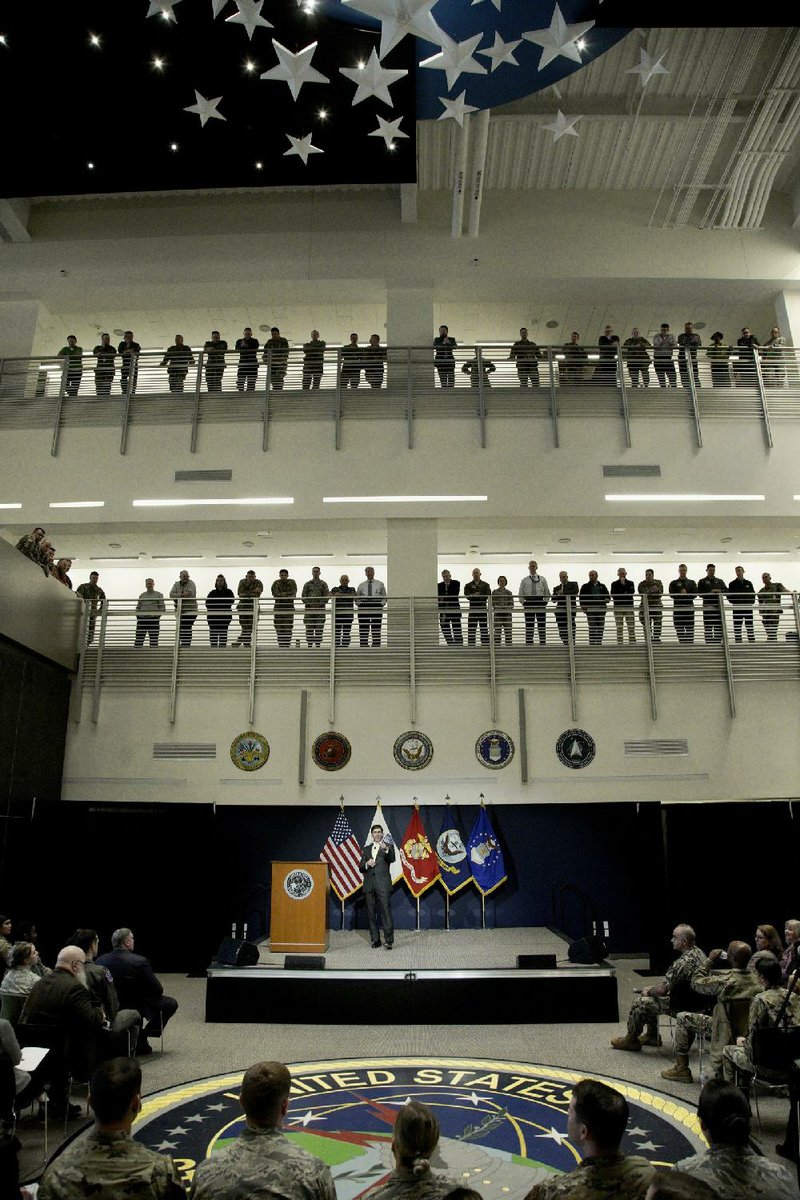MINOT AIR FORCE BASE, N.D. -- Defense Secretary Mark Esper used his first-ever visit to a nuclear missile field in North Dakota to tout the Trump administration's multibillion-dollar plan for a top-to-bottom modernization of the nuclear arsenal. The project is necessary, he said, to keep up with Russia and outpace China.
"Russia and China are both modernizing and expanding their nuclear arsenals," Esper told reporters, speaking alongside a B-52 bomber, which, along with Minuteman 3 intercontinental ballistic missiles and Navy ballistic missile submarines, represent the three "legs" of the U.S. nuclear triad.
"All three legs of the triad need to be modernized, and it's critical if we're going to maintain a strategic deterrent -- that word is critical, we're trying to deter war ... we need to have the confidence that our triad and related systems are effective, that are safe, that are reliable, that are credible," he said Wednesday.
President Donald Trump recently referred to the spending of billions of dollars on nuclear weaponry by the United States, Russia and China as "this craziness." His solution to controlling that expense is to get China and Russia to negotiate a new arms deal to replace a U.S.-Russia agreement, the New START treaty, that is due to expire one year from now unless extended.
[Gallery not loading above? Click here for more photos » arkansasonline.com/221esper/]
The Congressional Budget Office has estimated the first 10 years of the modernization plan will cost nearly $500 billion, and that over a 30-year span the total would hit $1.2 trillion, including the cost of sustaining the current and future force.
The key new weapons are a replacement for the Minuteman 3 ICBM, a new-generation Columbia-class ballistic missile submarine fleet, and a new long-range bomber, dubbed the B-21 Raider, to replace the B-2 stealth bomber that is to be retired even as the older B-52 bomber remains. The B-52, which entered service in the 1960s, is getting new engines and other major upgrades.
In his 2021 defense budget proposal to Congress, Trump requested $2.8 billion for the Raider bomber and $1.5 billion for the new-generation ICBM.
In all, the administration's proposed nuclear weapons budget for 2021 would approach $46 billion, divided between the Defense Department, which is responsible for operating the weapons, and the Energy Department, which maintains the warhead stockpile. That is more than the administration's proposed $41 billion for the State Department and U.S. Agency for International Development.
Under current planning, the Pentagon alone would spend a combined $85 billion in the coming five years for the new bomber, the new ICBM, the Columbia-class submarine and modernization of the communications and warning systems that support the whole system of nuclear command and control.
Esper came to Minot to get an up-close look at the Minuteman 3 missile system and the B-52 bomber. Minot, situated in the northwest corner of North Dakota, is the only military base with both weapons systems. The rest of the B-52 fleet operates from Barksdale Air Force Base in Louisiana, and the other Minuteman 3 bases are in Wyoming and Montana.
Once called America's "ace in the hole," the ICBM is the card never played. That is their intended role -- to dissuade any other nation from attacking with nuclear weapons for fear of a devastating U.S. retaliation.
The ICBM is the most controversial segment of the nuclear force, in part based on an argument by critics that having the missiles constantly ready for launch on a moment's notice raises the risk of miscalculation leading to nuclear war. The Trump administration, however, reaffirmed its commitment to the ICBM force in a 2018 review.
"The ICBM force is highly survivable against any but a large-scale nuclear attack," the review concluded. "To destroy U.S. ICBMs on the ground, an adversary would need to launch a precisely coordinated attack with hundreds of high-yield and accurate warheads. This is an insurmountable challenge for any potential adversary today, with the exception of Russia."
Trump would like Russia and China to agree to negotiations leading to broader limits on nuclear weapons, thus saving the need to keep building new ones. But with China showing little or no interest in such talks, Trump is asking Congress for tens of billions of dollars to modernize the entire U.S. arsenal.
A Section on 02/21/2020
